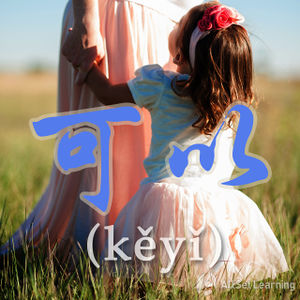Difference between revisions of "Expressing permission with "keyi""
(吸烟太难了) |
|||
| Line 46: | Line 46: | ||
<div class="liju"> | <div class="liju"> | ||
| − | * 这里 有 人,你 <em>不 可以</em> 坐 在 这里。<span class="trans">There are people. You can't sit | + | * 这里 有 人,你 <em>不 可以</em> 坐 在 这里。<span class="trans">There are people. You can't sit here.</span> |
* 小孩子 <em>不 可以</em> 看 这 个。<span class="trans">Small kids can't see that.</span> | * 小孩子 <em>不 可以</em> 看 这 个。<span class="trans">Small kids can't see that.</span> | ||
* 他 <em>不 可以</em> 跟 我们 来。<span class="trans">He can't come with us.</span> | * 他 <em>不 可以</em> 跟 我们 来。<span class="trans">He can't come with us.</span> | ||
| − | * 现在 你 <em> | + | * 现在 你 <em>不 可以</em> 进来。<span class="trans">You can't come in right now.</span> |
* 你 <em> 不 可以</em> 迟到。<span class="trans">You can't be late.</span> | * 你 <em> 不 可以</em> 迟到。<span class="trans">You can't be late.</span> | ||
* 十 八 岁 以前 <em>不 可以</em> 喝 酒。<span class="trans">Before you are 18 you can't drink alcohol.</span> | * 十 八 岁 以前 <em>不 可以</em> 喝 酒。<span class="trans">Before you are 18 you can't drink alcohol.</span> | ||
* 我 <em>不 可以</em> 要 两 个 吗?<span class="trans">Can't I have two?</span> | * 我 <em>不 可以</em> 要 两 个 吗?<span class="trans">Can't I have two?</span> | ||
| − | * 妈妈,我 <em>不 可以</em> 出去 玩 吗?<span class="trans">Mom, | + | * 妈妈,我 <em>不 可以</em> 出去 玩 吗?<span class="trans">Mom, can't I go out and have fun?</span> |
* 现在 <em>不 可以</em> 吃 饭 吗?<span class="trans">Can't we eat now?</span> | * 现在 <em>不 可以</em> 吃 饭 吗?<span class="trans">Can't we eat now?</span> | ||
Revision as of 06:03, 26 December 2013
-
Level
-
Similar to
-
Used for
-
Keywords
可以 (kěyǐ) is primarily used for expressing permission.
Contents
Structure
Permission is expressed with the auxiliary verb 可以. It might be helpful to think of 可以 as meaning "may." This will help to keep its functions and usage clear.
Subject + 可以 + Verb + Object
Use this structure to express permission to do things.
Examples
- 你 可以 坐 在 这里。You may sit here.
- 我 可以 看 这 个 吗?May I see this?
- 他 可以 跟 我们 来。He can come with us.
- 我 可以 进来 吗?Can I come in?
- 你 可以早 点 来 吗?Can you come early?
- 十 八 岁 以后 可以 喝 酒。After you are 18 years old you may drink alcohol.
- 我 可以 要 两 个 吗?Can I have two?
- 妈妈,我 可以 出去 玩 吗?Mom, may I go out and have fun?
- 现在 可以 吃 饭 吗?May we eat now?
- 这里 可以 吸烟 吗?Can I smoke here?
Negating 可以 sentences
可以 sentences are negated with 不 , which is inserted in front of 可以:
Subject + 不 + 可以 + Verb + Object
Examples
- 这里 有 人,你 不 可以 坐 在 这里。There are people. You can't sit here.
- 小孩子 不 可以 看 这 个。Small kids can't see that.
- 他 不 可以 跟 我们 来。He can't come with us.
- 现在 你 不 可以 进来。You can't come in right now.
- 你 不 可以 迟到。You can't be late.
- 十 八 岁 以前 不 可以 喝 酒。Before you are 18 you can't drink alcohol.
- 我 不 可以 要 两 个 吗?Can't I have two?
- 妈妈,我 不 可以 出去 玩 吗?Mom, can't I go out and have fun?
- 现在 不 可以 吃 饭 吗?Can't we eat now?
See also
Sources and further reading
- New Practical Chinese Reader 1 (新实用汉语课本1) (pp. 160-1) →buy
- New Practical Chinese Reader 1 (新实用汉语课本1)(2nd ed) (pp. 185-7) →buy



